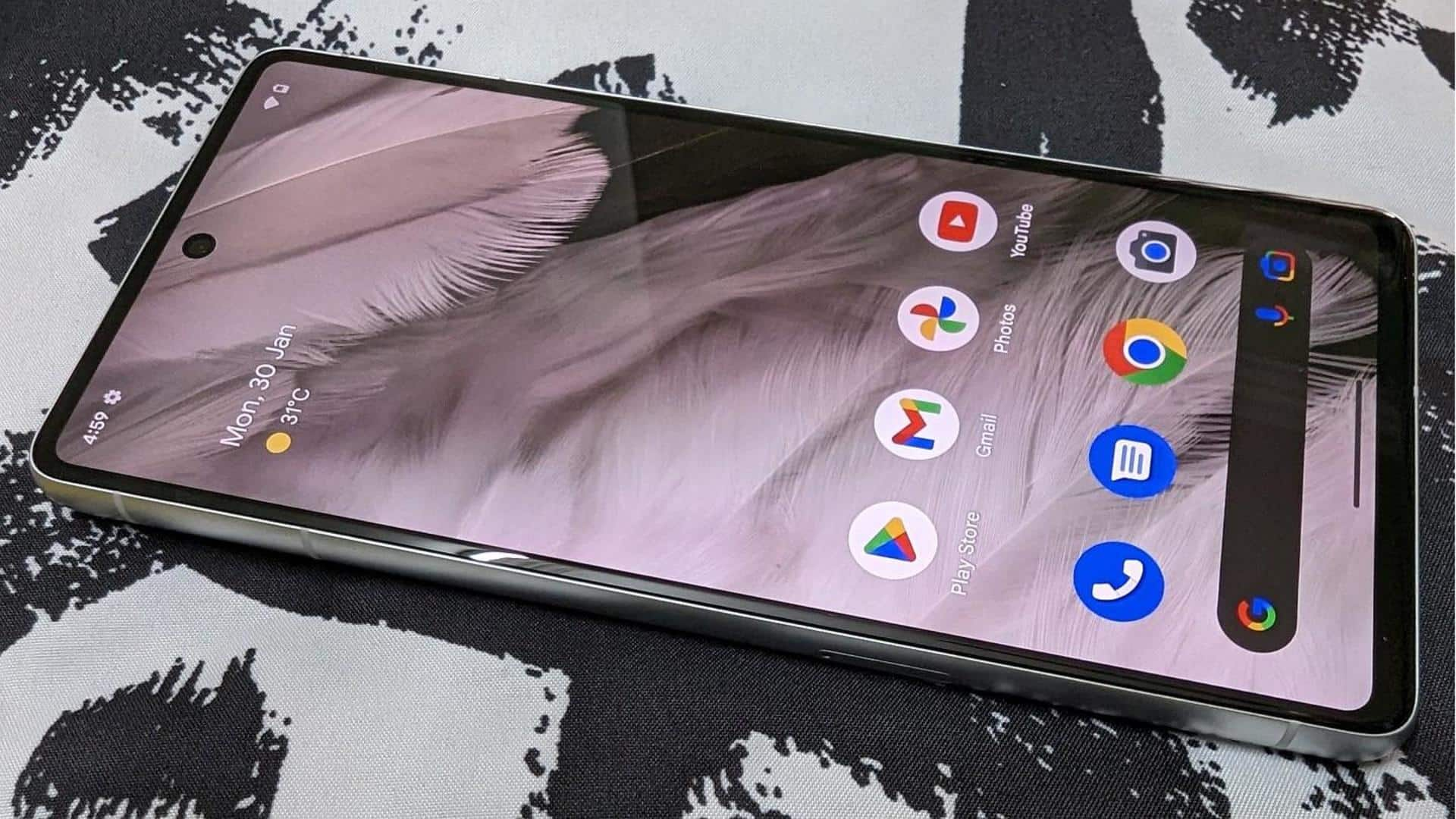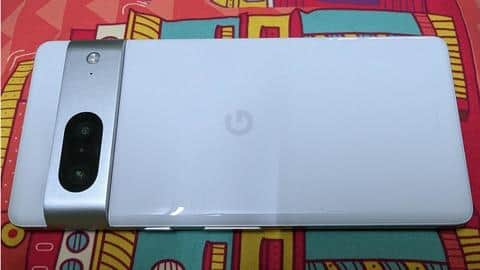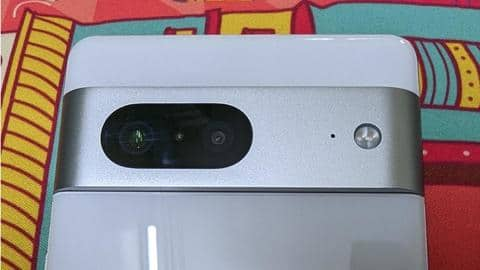Google Pixel 7 review: Affordable, less flashy Pixel 7 Pro
We reviewed the Google Pixel 7 Pro a couple of months back, and it was quite an enjoyable experience. From pure Android 13 to the renowned Pixel cameras, it was a great phone that we happily rated as one of the very best of 2022. Having said that, its price tag isn't something that many would find affordable. Enter Pixel 7, which isn't exactly inexpensive by any standards, but is a lot more affordable than its Pro variant, while retaining a lot of its goodness. It is only logical that Google has not equipped a Rs. 25,000 cheaper phone with everything that its flagship flaunts. But three vital features are actually common to both, and I am talking about the main camera, the processing hardware, and the software. On the face of it, the Pixel 7 seems like a great buy. Time to take a closer look at what it brings to the table, what it misses out and if it is indeed worthy of your money.
Premium looks and vibrant display but with 90Hz refresh rate
The Pixel 7 looks a lot like the Pro barring the display. This too has an aluminum frame and a glass back which, along with the display, is protected by Corning Gorilla Glass Victus. Fingerprints and smudge marks are barely visible on the white variant that we received for review. The phone has an IP68 rating for dust and fluid resistance. This phone is noticeably more compact than the Pixel 7 Pro, yet weighs close to 200 grams. But the weight distribution is good and the phone doesn't feel too heavy. A full-width metallic band is present at the back for cameras - similar to the 7 Pro but with one less camera. While it is a signature design element of the new Pixel phones, I am not too fond of it as it makes the phone bulkier, and also accumulates a lot of dust at its base that needs frequent cleaning. Like most Pixel phones, the volume rocker as well as the power button are placed along the right edge. The placement of the in-display fingerprint scanner is spot on, and one can access it without stretching the thumb much. Just like in case of the Pro, the scanner is moody and doesn't work as expected at times. The SIM tray is present along the left edge of the phone, while a USB-C port and a speaker can be found at the base. Like in most flagship phones over the past few years, you do not get a memory card slot or a 3.5mm headphone jack here. The QHD+ LTPO curved AMOLED display on the Pro has been replaced with a smaller 6.3-inch Full HD+ standard AMOLED variant on the Google Pixel 7. While it is HDR10+ compliant and has 1,400-nits peak brightness, the refresh rate is limited to just 90Hz. Not a deal-breaker but 120Hz would have been ideal. The sharpness, color reproduction and contrast are excellent.
Same hardware as the Pro variant; only 128GB storage variant
The Pixel 7 is powered by Google's new Tensor 2 processor that also powers the 7 Pro, and you get 128GB of UFS 3.1 storage. RAM has been dropped from 12GB to 8GB, but that doesn't hamper its performance. Again, you get just the single variant of the phone here, but you do have three color options. As we witnessed in the Pixel 7 Pro review, the Tensor 2 SoC is not as powerful as Qualcomm's Snapdragon 8 Gen 1 chips when it comes to raw processing power. As per popular synthetic benchmarks, the performance is a lot closer to the Snapdragon 888 SoC, which is more than decent even in this segment. Also that's just raw power, and one must also factor in the Tensor 2's AI and ML crunching capabilities that the synthetic benchmarks cannot compute entirely. The day to day performance of this phone was perfectly smooth across the board. Be it switching between multiple apps, browsing with multiple tabs open, chatting, photography or gaming, things worked just fine. The phone barely heats up during general use. It does get noticeably warmer if you indulge in 30 minutes of gaming, but nothing alarming. Speaking of gaming, you can play all the recent games on it at high settings comfortably. The lower resolution display here also puts less load on the GPU. This phone has dual speakers, one behind the earpiece and the other along the bottom edge. They are loud and clear with a bit of punch and more than decent stereo separation. The phone is Bluetooth 5.2 compliant to connect with wireless earphones and speakers. You get tri-band Wi-Fi here with support for a/b/g/n/ac/6e standards. The call quality and reception gave us no reason to complain on this 5G-ready phone during our testing.
The best of Android 13; decent battery backup, slow charging
The Pixel 7 runs the latest Android 13, and as you expect from a Pixel device, you get pure Android experience with the Material You design language. There is absolutely no change in experience as compared to the 7 Pro, which has easily the best version of Android 13 around. The user interface is smooth, lag-free and without any bloatware or bugs. Not to forget timely software updates. You get a bunch of useful tools on this phone like photo enhancement, object recognition and voice typing, which make use of some smart AI and ML algorithms. The popular Google image editing tools like the Magic Eraser and Camouflage work well. The Eraser lets you remove objects or even people from images by simply circling or marking them on the phone screen. The results are as good as we got on the 7 Pro and better than the Pixel 6 series. Google has also added face unlock on the Pixel 7 series, but we would politely call it 'work in progress' at the moment. The battery backup of the Pixel 7 is pretty decent. Though the capacity is lower at 4,355mAh, it lasts longer than the Pro mainly because of its less demanding display. The phone stays powered for a little over a day on a full charge. The charging time remains far from impressive though. Google does not bundle a charger with this phone, and a standard 10W charger takes forever to charge it. The Pixel 7 does support 20W fast charging using USB-PD 3.0 chargers, and we tried a couple of chargers from StuffCool with 25W and 30W output to figure out how fast. The best we could manage was a little under 100 minutes to charge it from 0 to 100%. That's nowhere close to what brands like OnePlus, Realme or Xiaomi offer these days even on their budget and mid-tier offerings.
Excellent main camera; no telephoto camera
The rear camera department is a little different here as compared to its elder sibling though you get the same 50MP primary camera with optical image stabilization (OIS). You get a 12MP ultra-wide camera here too with a slightly narrower 114-degrees FOV but no auto-focus. Unlike the Pro, the ultra-wide camera doesn't double up as a macro camera due to lack of auto-focus. The 48MP telephoto camera has been omitted on the Pixel 7, hence you do not get the 5X optical zoom and the fancy 30X digital zoom that the Pro flaunts. The 10.8MP front camera has been retained and it does a good job with selfies, with natural skin tones, broad FOV and support for portrait shots too. This phone can record 4K videos at 30/60fps and 1080p videos up to 240fps. You get OIS and EIS support that works well. The captured footage is sharp and stabilized. Moving on to photography, the main camera does a great job in normal as well as low light. The performance is identical to that of the 7 Pro's main camera; no surprises there. The colors in captured images are close to natural with excellent contrast and dynamic range. The low light performance is equally impressive with great detail and minimal noise. When the light drops below a point, the phone automatically turns on Night Sight that brightens up the image without any major drop in detail. The portrait shots remain great on the Pixel 7 with good foreground and background separation. The 12MP ultra-wide camera does a good job in well-lit conditions and the image quality is comparable to the main camera. Its low light performance is not in the same league though. Macro photography is not an option here. One can shoot from a reasonable distance using the main camera and then crop the part of the image for close-ups; it generally works well.
Excellent main camera; no telephoto camera, auto-focus on ultrawide camera
The rear camera department is a little different here as compared to its elder sibling though you get the same 50MP primary camera with optical image stabilization (OIS). You get a 12MP ultra-wide camera here too with a slightly narrower 114-degrees FOV but no auto-focus. Unlike the Pro, the ultra-wide camera doesn't double up as a macro camera due to lack of auto-focus. The 48MP telephoto camera has been omitted on the Pixel 7, hence you do not get the 5X optical zoom and the fancy 30X digital zoom that the Pro flaunts. The 10.8MP front camera has been retained and it does a good job with selfies, with natural skin tones, broad FOV and support for portrait shots too. This phone can record 4K videos at 30/60fps, and 1080p videos up to 240fps. You get OIS and EIS support that works well. The captured footage is sharp and stabilized. Moving on to photography, the main camera does a great job in normal as well as low light. The performance is identical to that of the 7 Pro's main camera; no surprises there. The colors in captured images are close to nature with excellent contrast and dynamic range. The low light performance is equally impressive with great detail and minimal noise. When the light drops below a point, the phone automatically turns on Night Sight that brightens up the image without any major drop in detail. The portrait shots remain great on the Pixel 7 with good foreground and background separation. The 12MP ultra-wide camera does a good job in well-lit conditions and the image quality is comparable to the main camera. Its low light performance is not in the same league though. Macro photography is not an option here. One can shoot from a reasonable distance using the main camera and then crop the part of the image for close-ups; it generally works well.
An affordable and compact alternative to the Pixel 7 Pro
The Google Pixel 7 can be purchased for Rs. 59,999 in India with a one year warranty. One can also spot it for a good Rs. 5,000 to Rs. 10,000 lower in online sales. Even without a discount, it is Rs. 25,000 cheaper than the Pixel 7 Pro. You do miss out on things like a higher resolution QHD+ curved display and a dedicated telephoto camera, but for that kind of price difference, one can live without them. More importantly, the key aspects of the flagship device like the main camera, processing power and software experience are available here. While the processing hardware doesn't top the benchmark charts, it is powerful enough and in combination with the software, delivers a great experience overall. The main camera performance is flagship grade and the ultra-wide camera isn't bad either. The software experience is as good as it gets on Android phones, and one can expect the most recent version of Android on the Pixel 7 phones first along with frequent security updates. A fast charging solution is something that Google seriously needs to look at. But other than that, the Google Pixel 7 is a very good all-round phone in the Rs. 50,000 to Rs. 60,000 price bracket. Having said that, it isn't a runaway winner in the segment as there are plenty of quality options if you are willing to spend that kind of money. The Realme GT 2 Pro is one such option to consider, and keep an eye out for the upcoming OnePlus 11 that may create a stir in the segment if priced right.



